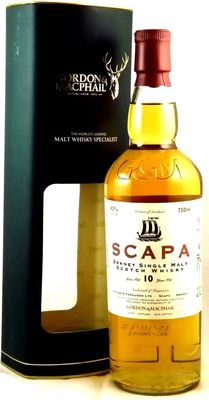|
|
3rd Party Tasting Notes
Light and fruity with green apples, white grapes and sweet vanilla. On the palate chili spices initially with grapefruit and a lingering creamy milk chocolate edge.
From the Bottle
The Bottler: Gordon & MacPhail
| Established: 1895 |
| Silent since: False |
| Address: George House, Boroughbriggs Road, Elgin, Moray, Scotland IV30 1JY, UK |
| → website |
Just as his father had introduced him to the firm, so George brought in his own children. The oldest, Ian, joined in 1967, after having been trained in the wine and spirit trade in London and France. He was followed by David in 1972 and Michael in 1981. The former had studied business in Aberdeen; Michael is a Chartered Accountant. George"s daughter, Rosemary joined in 1990, after raising her family.
The family partnership became a limited company in the late 1970s, but ownership and management remained with the family, as it does to this day. George Urquhart died in 2001, five years before his grandsons Stephen Rankin and Neil Urquhart were appointed Associate Directors.
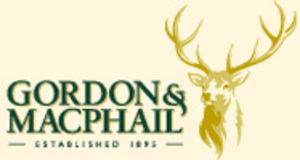
John Urquhart was joined by his son, George, and daughter, Betty, in 1933, and by another son, Gordon, in 1950. By this time the family firm held the largest range of bottled malt whiskies in the world. Most makes were unavailable elsewhere, since very few distillery owners bottled their own malts as singles - indeed, it is no overstatement to say that Gordon & MacPhail single-handedly kept the amber lamp of aged malt whisky burning during the post-war decades!
In the mid-1960s George Urquhart took the unprecedented step of launching a range of single malts from different distilleries under the brand name "Connoisseur"s Choice", and offered the range for sale in the rapidly expanding Italian, French, American and Dutch markets. This move laid the foundations for the significant interest in malt whisky in these countries that remains to this day.
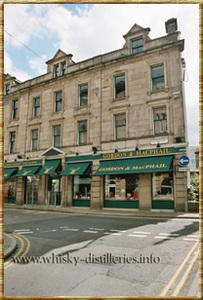
Among the new shop"s first employees was John Urquhart, a lad of fifteen who was to serve his apprenticeship under the partners. He was an able learner, and before long was helping James Gordon to select and buy casks of malt whisky from local distilleries, and assisting with the creation of house blends for the firm"s customers around the north of Scotland. When J.A. MacPhail retired in March 1915, Urquhart became a partner in the business, and when James Gordon died suddenly only two weeks later, he became senior partner.
In parallel with the grocery side of the enterprise, John Urquhart developed the whisky broking business begun by James Gordon, and in particular began to specialise in single malt whiskies - bottling under license for famous distilleries such as Macallan, Glenlivet, Glen Grant, Linkwood and Mortlach. As part of this business he began to select and fill his own casks - almost always Spanish oak, ex-sherry casks - at these and other distilleries, and to mature his whiskies for much longer than was customary at the time.
On 24th May 1895, the Elgin Courant reported the opening "in New, Centrical, and Commodious Premises, No"s 38 and 40 South Street... a Family Grocers, Tea, Wine & Spirit Merchants". The founders of the firm were James Gordon and John Alexander MacPhail, and from the outset (as the newspaper reported) the stock was "personally selected", with a view to providing "a superior article at a popular price" and giving "the utmost satisfaction".
from Gordon & MacPhail
The Distillery: Scapa
| Established: 1885 |
| Silent since: False |
| Address: St Ola Kirkwall, Orkney KW15 1SE, United Kingdom |
| → website |
In the new Millenium
The Scapa distillery is located on the main island of the Orkney isles, north-east of the Scottish mainland. Both distilleries on the main island (Highland Park is the other one) are in or near the town of Kirkwall. Scapa is situated on the Lingro Burn, two miles south west of Kirkwall at the head of Scapa Bay.
Hiram Walker tried to influence the character of the whisky in order to better meet the demands of the whisky blenders. The makers of Ballantine"s (as well as many other brands) wanted to be able to use a wider spectrum of malt whiskies without having to build more different malt whisky distilleries. The very first Lomond still was installed in 1956 in Hiram Walker"s Dumbarton distillery. Because maintenance of the Lomond stills was very labour intensive, most were removed again in the early 1980"s. However, the still at Scapa distillery wasn"t replaced with a regular pot still. Instead, the Lomond wash still was "lobotomised" - the rectifier plates were removed so that it would be able to function (more or less) as a regular pot still.
Meanwhile, the malting floors at Scapa distillery had already been closed in 1962. This was not unusual in the 1950"s and 1960"s. In fact, dozens of distilleries had been closing off their malting installations; malting floors and so-called Saladin boxes. Thanks to a concentration trend in the whisky industry most companies owned a number of distilleries, enabling them to do the malting at one or a handful of central locations. For example, after the Port Ellen distillery was closed the maltings remained operational to supply distilleries like Ardbeg and Lagavulin with malted barley.
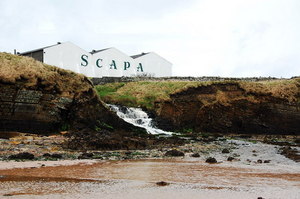
The Bloch brothers were whisky blenders and brokers that operated under the name Bloch Brothers (Distillers) Limited. Maurice Bloch acquired the title "sir" at some point and sold the Scapa distillery to Hiram Walker & Sons in 1954. Two years later he set up the Maurice Bloch Trust, a charitable foundation for the advancement of religion and education and for the alleviation of disease. Meanwhile, the new owners went to work on the equipment at Scapa; they replaced one of the stills with a so-called "Lomond still" in 1959.
The installation of Lomond stills occurred in many more Hiram Walker distilleries; Glenburgie, Inverleven, Miltonduff, etcetera. Alistair Cunningham & Arthur Warren of Hiram Walker came up with the idea for the more modern Lomond still in 1955. This type of still had a regular "pot" at the bottom of the still, but the traditional swan neck had been modified. Within the straight pipe three adjustable plates ("rectifier plates") which could be cooled separately. By modifying the position and temperature of the plates the reflux of the "boiling" whisky could be controlled. The angle of the "lyne arm" at the top of the still could be modified as well.
As you can see from the picture at the right, the distillery itself doesn"t look as romantic as many of its mainland counterparts. Like many distilleries on the more remote islands, Scapa has to deal with less than favourable conditions. For one thing, it is far more difficult to get the required natural resources (barley, yeast, oil, etc.) from the mainland to the distillery.
The Scapa distillery was built in 1885 by John T. Townsend and one Mr. MacFarlane (whose first name isn"t mentioned in any source I"ve checked). Their private company was taken over by Scapa Distillery Company Ltd. in 1919, but this company went into liquidation in 1934. The production of malt whisky stopped as well at this time, but it was resumed again in 1936 when brothers Maurice & John Bloch (owners of the Glengyle and Glen Scotia distilleries in Campbeltown) took over the Scapa distillery. It is said that they needed the malt whisky from Scapa distillery for their "Ambassador" blend - one of the very few blends that also had a solid reputation amongst many malt whisky purists.

In that case the Port Ellen maltings could supply the seven distilleries on Islay with malted barley. However, there are only two distilleries on the island of Orkney. I"m not sure if Highland Park produces malted barley for the Scapa distillery (they are owned by different companies), but since they are one of the few remaining distilleries that do their own malting that would make sense. I"m not sure if it"s still the case, but in the past Scapa"s malted barley used to be entirely unpeated. However, the water supply of Scapa is said to be very peaty.
The water wheel in the Lingro Burn was used to power the distillery in the good old days. Most of the buildings in the picture were built during a reconstruction in 1959. Two of the original warehouses from the 19th century survive, though. The distillery was mothballed in 1994 but has resumed malt whisky production in November 2004.
2004 - After operating for just a few months each year since 1997, the Scapa distillery is extensively refurbished (to the tune of more than 2,000,000 GBP) and full time whisky production resumes. In the same year, the 12 years old standard expression that was available in the 1990"s and early noughties is replaced with a 14yo OB.
2005 - Pernod Ricard become the new owners of Scapa throught their subsidiary Chivas Brothers.
2008 - The new Scapa 16yo standard expression is launched, replacing the 14yo that emerged in 2004.
Trivia:
- Scapa and Highland Park are both located South of Kirkwall, but their "house styles" are quite different. As such, they are perfect examples of the limited value of the "terroirs" theory from the wine world when it comes to whisky.
- Most of the malt whisky produced at Scapa distillery is still used in blended whisky like Ballantine"s.
- Scapa distillery is the second northernmost distillery in Scotland - located just a few hundred meters South of the Highland Park distillery. For a while it looked like Blackwood distillery on the Shetlands might become the northernmost whisky distillery in Scotland, but that never really got off the ground.
- Scapa flow (a stretch of water that links the North Sea and the Atlantic) was home to a major Royal Navy anchorage in both world wars.
- Scapa distillery uses exclusively bourbon casks for maturation.
- The famous whisky writer Alfred Barnard visited the Scapa distillery in 1886, one year after it was founded. He described it as "one of the most complete little distilleries in the Kingdom" with "the newest type of stills and heated by steam instead of fire, and are both fitted with collapse valves, which allow air to enter in the event of a vacuum being formed".
- When Scapa was relaunched in 2004 the distillery had been mothballed for a decade. That seems to be one of the reasons for replacing the 12 years old official expression with a 14 years old version in 2004.
- Orkney was already inhabited in the bronze age. Vikings from Scandinavia arrived on Shetland and the Orkney islands in the 8th century and ruled the area for well over 500 years. It became a part of Scotland again when the king of Denmark sold the islands to James II of Scotland in 1468.
from Malt Maniacs
The Owner: Chivas Brothers
| Established: 1801 |
| Silent since: False |
| Address: Strathisla Distillery, Seafield Avenue, Keith, Banffshire, AB55 5BS, United Kingdom |
| → website |
Chivas Regal is a blended Scotch whisky produced by Chivas Brothers, owned by Pernod Ricard. According to the brand packaging, Chivas Brothers was first established in 1801 in Aberdeen, Scotland. The Chivas brand"s home is Strathisla Distillery at Keith, Moray in Speyside, Scotland. It is the market leading Scotch whisky aged 12 years and above in Europe and Asia Pacific. Chivas Regal sales have grown by 61% between 2002 and 2008.
In the early 1900s, Chivas Brothers decided to create their most aged blended Scotch whisky to export to the U.S, where the booming economy after the turn of the century was fueling demand for luxury goods. The whisky was named Chivas Regal.
Chivas Regal 25 Year Old was launched in 1909 as the original luxury Scotch, and became a leading brand in the U.S. Chivas Regal continued its success until prohibition in the 1920s.
In 1843, Chivas Brothers were granted a Royal Warrant to supply goods to Queen Victoria. Chivas Brothers was described in 1890 as "undoubtedly the finest purveying business in the north of Scotland" by "Scotland of Today" magazine.
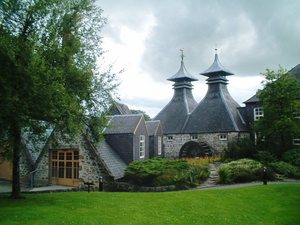
During the 1850s, James Chivas decided to respond to his affluent customers" demands for a smoother whisky, by beginning to blend whiskies to create a proprietary blend to Chivas Brothers. Their first blended Scotch whisky named "Royal Glen Dee" was launched, followed in the 1860s by their second blended Scotch whisky, "Royal Strathythan".
The House of Schivas, a large mansion, was built at Schivas in Aberdeenshire in 1640. The name is derived from the Gaelic "seamhas", meaning narrow place.
Chivas Brothers traces its roots to the opening of a grocery store at 13 King St, Aberdeen in 1801. The store sold luxury foodstuffs such as coffee, exotic spices, French brandies, and Caribbean rums to a wealthy clientele. In 1842, Chivas Brothers were retained to supply provisions to the royal family at Balmoral Castle upon Queen Victoria"s first visit to Scotland.
Chivas Regal was purchased by Seagrams in 1949, which provided a much wider distribution and marketing system.
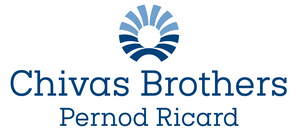
Chivas Regal was re-launched as Chivas Regal 12 year old in the US following the disruption of both Prohibition and World War II. Chivas became a fashionable brand of the era, and became associated with Frank Sinatra and the rest of the Rat Pack. Chivas Regal was the Scotch whisky requested by Sinatra, along with other spirits brands backstage at performances, and Chivas sponsored Frank Sinatra"s Diamond Jubilee Tour in 1990.
The Strathisla distillery is owned by Chivas Brothers, and Strathisla Single Malt is one of the malt whiskies used within the Chivas Regal blend.
Strathisla Single Malts have a natural sweetness and help to define the taste of Chivas Regal.
In 1950, the company Chivas Brothers was able to buy the Strathisla Distillery which produces the Strathisla Single Malt, which is used within the Chivas Regal blend.
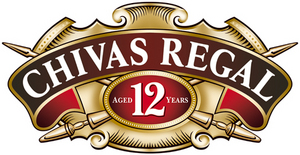
The Chivas Regal range was expanded with the launch of higher aged whiskies, in 1997 with the launch of Chivas Regal 18 year old, and in 2007 with the launch of Chivas Regal 25.
Chivas Regal was acquired by Pernod Ricard in 2000 upon the break up of Seagrams Group.
The home of Chivas Regal and location of its visitor centre is located at the Strathisla distillery. The distillery was founded in 1786, and is the oldest working distillery in the Highlands of Scotland - Strathisla Distillery, located in Speyside.
from Wikipedia
The Owner: Pernod Ricard
| Established: 1975 |
| Silent since: False |
| Address: 12, place des Etats-Unis, 75783 Paris Cedex-16, France |
| → website |
HELLO WORLD!!! Pernod Ricard owns a wide variety of brands including: Chivas Regal, Glenlivet, Jameson Irish Whiskey, Seagram"s, Pernod absinthe, Absolut, Ricard pastis, Martell cognac, Jaconb"s Creek wine, pernod anise, Havana Club rum, Ballantine"s scotch, Kahlue, Malibu rum, Beefeater gun, Stolichnaya vodka, Mumm champagne and more.
Pernod Ricard came into existence when old rivals Pernod and Ricard merged to form Pernod Ricard S.A.. Ricard was founded 1932 in Marseille by Paul Ricard. Pernod started with Henri-Louis Pernod who opened his first absinthe distillery in Switzerland in 1797, followed by Maison Pernod Fils in Pontarlier. In 1926 these distilleries merged with Distillerie Hernard in Paris to form Les Etablissements Pernod.
After the 1975 merger that formed the current company a series of buy-ins and takeovers began that continues until this day. In 1988 PR acquired Irish Distillers which includes Jameson Irish Whiskeys, in 1989 PR acquired Orlando Wyndham (makers of Jacob"s Creek wine), in 2001 PR purchased 38% of Seagram"s Wines and Spirits, in 2005 PR purchased Allied Domecq and in 2008 PR bought V&S Group which includes the Absolut Vodka brand.
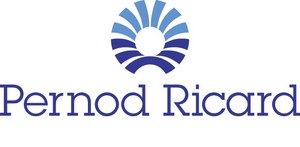
Reborn from the Pernod Fils company as a producer of anise liqueur following the ban on absinthe, it is now a worldwide conglomerate. It owns the alcoholic beverage division of the former Seagram corporation, among many other holdings. In 2005, the company acquired British-based international competitor Allied Domecq plc.
In 2008, Pernod Ricard announced the acquisition of Swedish-based V&S Group including Absolut Vodka.
Pernod Ricard (Euronext: RI) is a French company that produces alcoholic beverages. The company"s most famous products, Pernod Anise and Ricard Pastis, are both anise liqueurs, and often referred to as simply Pernod or Ricard. The company also produces several other types of pastis.
from Wikipedia
